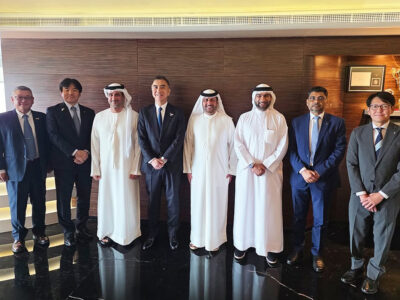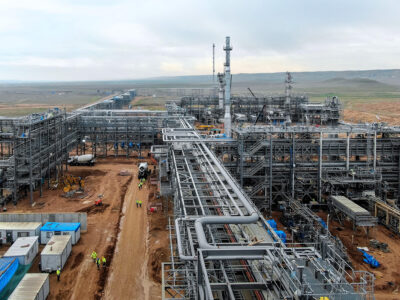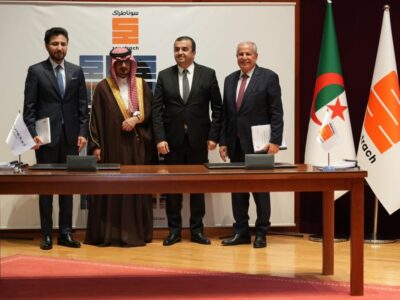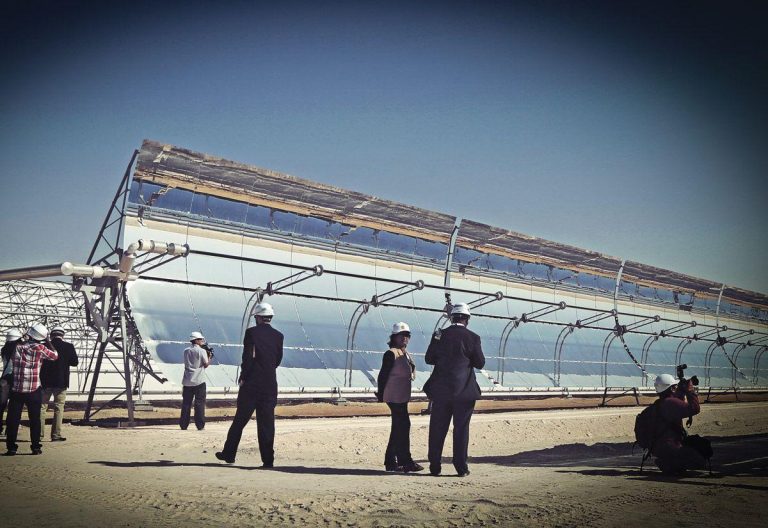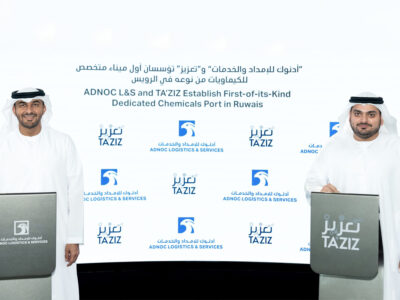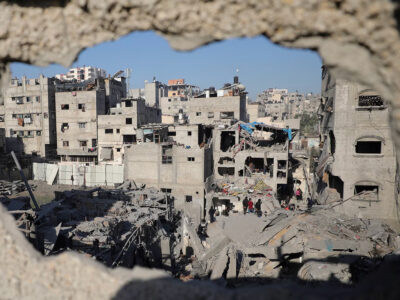Energy production will always be synonymous with the Middle East. Just as the discovery of oil underground changed the face of the region’s economy a century years ago, another resource — way above ground — is doing likewise today.
As forecasters predict that the region, along with Asia, will account for the majority of the world’s energy demand growth well into the 2030s, some pretty high renewable energy targets are finding their way into the centre of the region’s economic agendas.
Dubai alone has set itself a goal to become the city with the lowest carbon footprint in the world. Its target is to produce 7 percent of its power from clean energy sources by 2020, 25 percent by 2030, and a whopping 75 percent by 2050.
But the region’s clean energy leaders have an excellent reason to express confidence in their ability to hit their goals, as fortune shines down on them from above in the glow of solar energy. The ability to harness the sun’s power is the jewel in the region’s crown as it attempts to move away from a reliance on fossil fuels. In a region that is home to more than half of the world’s crude oil supply, and more than a third of its natural gas reserves, solar is emerging as not only a genuine alternative to non-renewables, but an increasingly cost-effective one.
There is little direct competition between renewables and oil — energy-market dynamics show that volatility in oil prices do not directly affect renewables, according to the State of Green Economy Report 2016. The cost of solar power has been driven down through technological advances, shifts in the manufacturing process and economies of scale, the report says. The result is a clean energy source that is cheaper than coal.
Dubai’s massive 800-megawatt Mohammed Bin Rashid Al Maktoum Solar Park will produce power for as little as 2.99 US cents per kilowatt-hour (kWh), according to DEWA. That figure is much lower than prices charged by coal-fired power plants.
The single-site solar park will be the largest in the world with a production of 5,000 megawatts (MW) — enough to power 800,000 homes — by 2030, after a total investment of $13.6bn. A five-company consortium chosen to build the park is being led by Abu Dhabi clean energy company Masdar, with the third phase set to be operational by 2020. Bids for the upcoming 350MW solar project in Abu Dhabi’s Sweihan are likely these record-low prices matched, or even beaten.
Masdar was official host partner to the Solar Impulse 2, the piloted fixed-wing aircraft that became the first to travel the globe without using a drop of fuel. The craft touched down in Abu Dhabi in mid-July after flying day and night using only solar power in a bid to gain more global attention for the viability of clean technologies.
As more solar projects are implemented, the costs could fall further, according to Bader Al Lamki, executive director for clean energy at Masdar. He says: “With solar, in particular, the past five to seven years has seen dramatic cost reduction — up to 60 percent — thanks to technology improvements, improvement in efficiency, but also cost reduction, which is also possible. The more projects that are implemented, the more scale is being provided.

Solar Impulse 2 is the first round-the-world solar flight, powered only by the sun, with no fuel or polluting emissions.
“Developers such as Masdar and others work to optimise their solutions and the result today is that we have solar energy being very competitive compared to conventional energy. In the UAE, we are twice-blessed; we have resources underground, hydrocarbons, which are being developed sustainably, and we have abundant sun above ground.
“I think there will be an increasing trend of more solar power plants to be implemented and also distributed. We are also seeing solar roof programmes kick-starting in Dubai on a commercial scale, so I think more and more solar will be integrated into the grid.
“The successful completion of the Solar Impulse 2’s round-the-world trip in Abu Dhabi is further proof of the viability of clean technologies and will help to drive the wider adoption of renewable energy regionally and globally. For the plane to be able to fly day and night, it needs to drastically reduce energy consumption and increase its ability to store solar energy efficiently. Solar Impulse and Masdar are about pushing past boundaries and long-term in thinking. This type of vision is changing how the clean energy landscape looks.”
The Mohammed Bin Rashid Al Maktoum Solar Park, named after the Ruler of Dubai, uses photovoltaic (PV) solar technology, which sees panels convert sunlight directly into electricity. Its alternative, concentrating solar power (CSP), collects the sun’s heat using giant mirrors, heating water or molten salt in order to produce electricity using a steam turbine, similar to a conventional coal-fired or nuclear plant.
“The technical challenges are well known,” says Nicholas Lander, regional sustainability lead at global environmental consulting company CH2M. “Photovoltaic (PV) panels de-rate, or perform worse, the hotter it gets. Ever-present sand dirties the panels, further de-rating them. Concentrated solar systems are less effective in the more diffuse light we get [in the Middle East].”
DEWA is planning further analysis on the tested modules that it says will provide valuable information on the technology characteristics that can help improve photovoltaic (PV) performance under various climates, with a solar testing facility at Mohammed Bin Rashid Al Maktoum Solar Park expected to play an important role. At the facility, performance and long-term stability of PV panels are evaluated to test their ability to cope with various weather conditions.
The next renewable energy target is much closer to home for residents in the UAE after Sheikh Mohammed Bin Rashid Al Maktoum, the Ruler of Dubai, called for solar panels to be installed on every roof in Dubai by 2030. The Shams Dubai Initiative was created last year to allow customers to produce their own solar power and profit from the resulting reduction in their electricity bills. According to DEWA, 30 systems had been connected to the grid by May this year.
It will mean significantly lower energy bills for residents who have solar panels fitted, says Johann Schoeman, project manager at Oryx Solar, a Dubai solar energy company that installs the systems. He says more must be done to incentivise homeowners if Sheikh Mohammad’s target is to be met.
“Residential solar PV systems can provide very real savings and excellent investment opportunities for homeowners in Dubai,” he says. “Assessments done in some of the most popular expat-owned communities show possible savings of up to 60 percent on monthly electricity bills. But this depends greatly on factors such as consumption patterns, available rooftop space and orientation of rooftops.

Solar Impulse 2 flying over the pyramids in Egypt.
“The unit price for electricity from a solar PV system is fixed for the entire lifetime of the system, and in most cases much less expensive than utility power from day one. The return on investment from a solar PV system literally grows year by year as utility prices increase. And in the long run, it is inconceivable that the cost of utilities generated from depleting fossil fuel sources will ever stop increasing.
“Our own research indicates that less than a handful of residential systems are actually operational and connected to the grid. [It] means that the speed at which buildings are connected will need to be increased significantly if the goal is to be reached. Although DEWA is actively working to simplify the connection process, there is a lot of work to be done to make the connection of thousands of residential PV systems possible in a short timeframe. In our opinion, this should be a collaborative effort between investors, local authorities, property developers and specialist installers as all parties benefit from a distributed generation model.”
So far, DEWA says it has received 27 applications to install PV systems in commercial and residential buildings, with a total capacity of 12MW. CEO and managing director Saeed Mohammed Al Tayer says the project will “become the gold standard for the entire GCC and beyond”. He says many government organisations and schools in Dubai have expressed intentions to install PV panels on their buildings.
“We have received a large number of enquiries for installing solar modules at residential buildings, farms and villas, as part of DEWA’s Shams Dubai Initiative,” Al Tayer says. “Through the majority of the projects are still under construction, the number of enquiries are growing on a daily basis.
“With its emphasis on boosting alternative and renewable energy sectors, Dubai continuously explores innovative forward-looking strategies and initiatives to promote the rational use of natural resources and create more solutions that replace traditional energy sources in a manner that supports the emirate’s sustainable development and bolsters its local and regional position as a role model for sustainable development.”
Neighbouring Saudi Arabia announced plans four years ago to invest $100bn to ensure solar energy would make up to 23 percent of the energy mix by 2030. So far, it has little to show for the announcement, though the state-owned utility Saudi Electricity Co (SEC) announced in June that it was seeking investors for two solar plants in the north of the country.
The kingdom’s first wind turbine was also announced in a partnership by Aramco and GE, in line with Saudi Vision 2030’s initial target of generating 9.5 gigawatts (GW) of renewable energy.
In Jordan, a wind speed of 10 metres per second in some places in the country makes it a favourable place for wind farms. Plans have been drawn for renewable projects with a capacity of more than 500MW to be connected to the grid by the end of 2018.
And in Dubai, the development of both biofuel and hydrogen fuel cell technology adds further diversity to the energy mix. The Department of Economic Development established the first commercial biofuel production plant, Neutral Fuels, in the emirate in 2010. The fuel source can be made from feedstocks including vegetable oils and animal fats, and oils from other sources such as algae. It has potential as a fuel for school and truck fleets — and eventually as a jet fuel.

Mohammed Bin Rashid Al Maktoum Solar Park will play a key role in Dubai’s energy diversification plans.
“Current jet biofuel production is technically feasible, but expensive. The UAE is leading research into this area, mostly looking into more sustainable and scalable feedstocks,” says Karl Feilder, CEO and chairman of Dubai-based The Neutral Group, an international clean-tech organisation that creates sustainability strategies for the logistics, energy and hospitality industries. Neutral Fuels is a member of the organisation.
Last year, waste cooking oil from McDonald’s restaurants in the UAE was used to produce enough biofuel to power a vehicle to travel 5 million km, proving, Feilder says, that biodiesel is a “drop-in” replacement for conventional diesel, without requiring vehicle modifications and enjoying the same fuel economy.
“The most common sources in the world are vegetable oils and rendered animal fats, but in the Middle East, nearly all biofuel is made from waste cooking oil,” Feilder says. “There are no financial incentives available in the UAE for commercial biofuel production, but over the past five years, it has been proven that Neutral Fuels can profitably produce biodiesel by using highly efficient, patented production technologies and by careful selection of feedstock.
“The cost of the feedstock represents up to 60 percent of the cost of finished biodiesel and currently much of this waste vegetable cooking oil is collected and sold overseas. This export of the UAE’s biofuel resources must stop as it is restricting the growth of the biofuel sector.”
In Dubai, 300MW of fuel cell capacity being assessed for deployment by the end of 2020, making it the largest single fuel cell deployment programme in the world, according to Tom Fielder, AFC Energy’s executive manager of business development, Middle East and Africa. Initiatives such as these will see hydrogen become “one of the fuels of the future”, he says.
“The UAE has consistently demonstrated its willingness to be a world-leading advocate of clean energy technology,” says Fielder. “Hydrogen is the cleanest energy source we know of, since the only byproduct is distilled water, the multi-utility opportunity in supplying both power and water sourced from hydrogen feed stock is of real interest to this region, which has several sources of hydrogen available to it for fuel cell applications.”
Hydrogen is not considered an energy source, but is instead an energy carrier. As hydrogen gas isn’t found in nature, it must be produced from sources such as air, water through electrolysis, or hydrocarbon fuels through reforming.
Japan recently committed $380m to the development of hydrogen technologies. By the Tokyo 2020 Summer Olympic Games, it plans to have thousands of hydrogen-powered cars on the road and at least 100 fuel-cell buses in operation, mostly in and around the Olympic Village.
Electric car sales are growing around the world and this is beginning to be reflected on the UAE’s roads as DEWA begins to install charging stations in Dubai.
“Considering the global growth rate of renewable energy and the suitability of solar power to this region, I think significant change to the reliance on fossil fuels for energy will be visible very soon,” Lander says. “Fossil fuels have other uses, though, from pharmaceuticals to plastics, and so I think they will always play a role in the economy.”
Of course, oil remains at the heart of the region’s economy — and that won’t change any time soon. But as fossil fuels grow in cost, and the price of renewable energy continues to fall, those sustainability goals that may once have seemed outlandish will move closer and closer towards becoming a reality.
